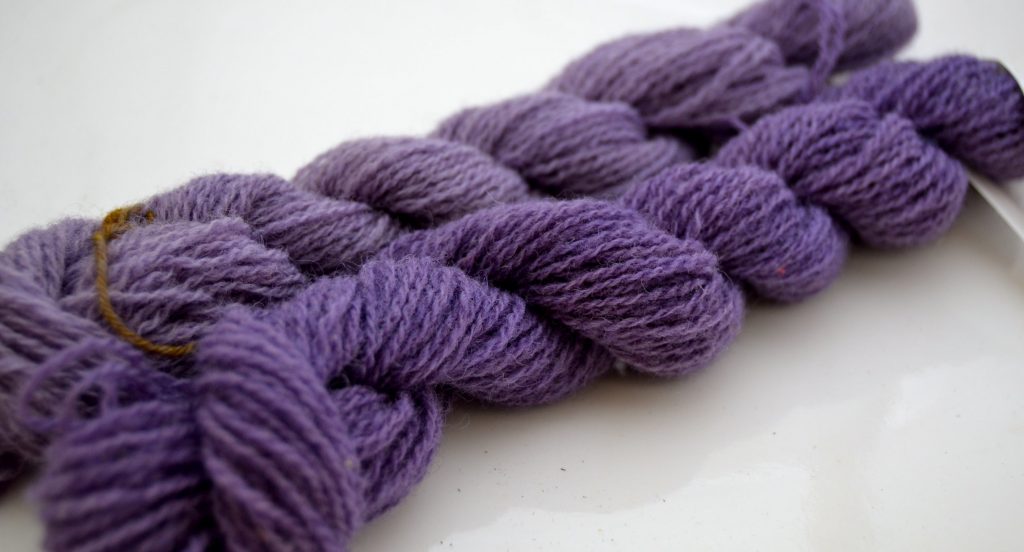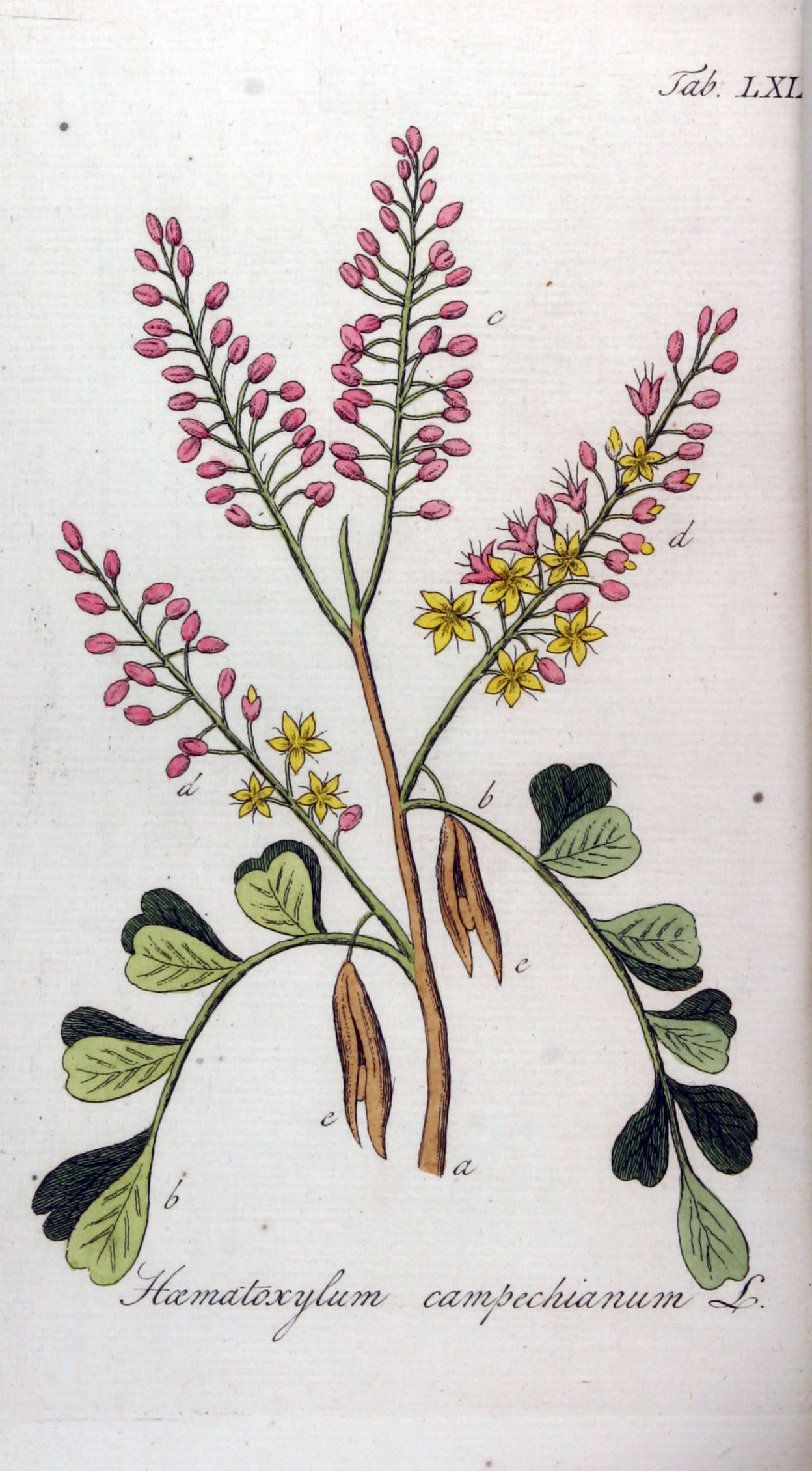Purple! This color has spelled trouble for the natural dyer for centuries, millennia even…
Tyrian purple, the famous purple used in antiquity, came from Phoenicia (around present-day Lebanon) where the coastal waters were full of snails of the Murex family, from which the dye (6,6′-dibromoindigo) was extracted.
In ancient times, Tyrian purple was an immense luxury, so expensive that only the very few could afford it. I don’t know exactly how expensive it was back then, but I looked up today’s price here: 27.444 kr per gram (that’s $4120 or 3675 euros). Per gram. I don’t know how much fabric that would have dyed, I’m guessing it couldn’t possibly be more than a kg (and probably much less) so we are talking about one expensive color.
I imagine there must have been quite the excitement when logwood purple hit the stage. Logwood (Haematoxylum campechianum) is a tree that grows in Mexico and Central America, and was brought back to Europe, where it became a much used dyestuff.
The dye molecule in logwood is hematoxylin, a molecule that is used for staining in cell biology even today!
Logwood can be used to dye a very nice purple on alum mordanted wool:

A very lovely purple indeed. But there’s just one big problem – the light-fastness is really low!
At a higher dyestuff to wool ratio, logwood and alum together give a blue color, which also has a terrible light-fastness.
My Danish book, “Farvning med planter” by Esther Nielsen, says that logwood blue was nevertheless used, and may have been OK for a while because people had little light indoors in the past. But the same book tells you that French dyers of high color were not allowed to have logwood in their workshops at all, because they also had alum, and those two together could be used to produce the inferior logwood blue which was forbidden for the dyers of high color – they had to dye blue with indigo.
Plain dyers, on the other hand, were allowed to have logwood, but they mainly used it to dye black. This is done by addition of iron, which makes the color somewhat more light-fast. The German name for plain dyer is “Schwarzfärber” which actually means dyer of black (this interesting article has more information on the dyer’s guild’s division into plain dyers and dyers of high color).
Historically, natural purple pretty much came to an end in 1856 with Perkin’s discovery of mauveine, the first synthetic dye. This discovery is often described as serendipitous, but I think that’s not so accurate. It is true that Perkins first made the molecule by happy accident, but he then noticed that the solution in his flask was purple. That was the first step. The second step was to quit his studies and turn mauveine into a successful business, something that required a lot of skill and effort over many years (this BBC program tells the interesting story, and also talks about the other top seller his company made: chemically synthesized madder red!).
But I’m not giving up on purple just yet, so I’ve decided to do a slightly systematic study of indigo overdyeing of some reds and pinks. To get an idea, I’ve played a bit with a color blending tool. Just to get an idea: this is a strong pink (cochineal) overdyed with weak blue (indigo), and this is a weak red-orange (madder) overdyed with strong blue (indigo). Next step is to actually carry out the overdying experiment, more on those results later!

HI there! I have just found your blog and love it! I have been doing a lot of natural dyeing the past month , and reading a lot about it everywhere I can find. One thing I read about Logwood I was wondering if you had run into as well- that over copper mordanted fiber, it is more lightfast? I felt better about using it over this mordant because of this information.
Have you heard this?
thanks ~ I was encouraged to try madder again with some melted snow to hopefully get a better red, as my previous ones were poor.
macrina
Hi Macrina,
Thanks!!
I haven’t come across anything on logwood plus copper, but I do remember reading that it is more lightfast with iron, so pretty much the same story.
I haven’t tried any of those combinations, for two reasons: first, I doubt that it would make a big enough difference, turning a notoriously fugitive dye suddenly wonderfully lightfast! Secondly, I don’t like using those metals if I can avoid it – because iron turns wool brittle, and because I don’t have a proper place to dispose of copper solutions (down the drain is not what I would consider proper disposal for copper).
So that’s why I tried my series of overdyeing of madder, cochineal, and indigo – it gives you light fast purples with no metals added (other than alum of course)
Astrid
[…] baby gown justice V&A har også en flot samling af gobeliner, og siden de er lavet længe inden 1856 kan man jo vide med sikkerhed, at alle farverne i dem er fra naturlige kilder. Så gobeliner er […]